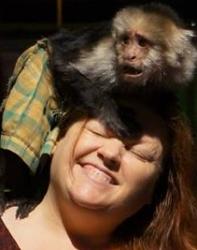There is a moment just before fear takes over when you freeze, when the body pauses to assess the danger. What was that noise? Was it just the wind? Could something be out there? The Haunting mirrors that experience of hearing a bump in the night. The film uses a vague sense of uneasiness to allow the tension to slowly build, without ever giving us the release of screaming. Camera angles are used to make the creepy old house itself incite fear – a long hallway that disappears into darkness, a statue that seems to be staring, a door that is inexplicably shut – these are the tools of director Robert Wise. The Haunting’s use of lights and shadow equals such cinematic greats as Frankenstein. Add in creepy sound effects and the terrified reactions of an expert cast, and this film scares the hell out of you without you actually seeing anything happen. In fact, it’s never quite clear whether or not all of this is simply occuring in everyone’s overactive imaginations, or perhaps only in the main character, Eleanor’s, own troubled mind.
 The Haunting set the storyline for many haunted house movies to follow. Anthropologist and ghost-hunter Dr. Markway obtains permission to conduct experiments at the reputedly haunted Hill House from its elderly owner (I love this character’s interesting way of whistling lightly when she pronounces the letter “S”), but only under the condition that her young nephew, Luke, tags along. Dr. Markway invites along a team of people who have experienced the supernatural, kind of like “ghost bait”. Only two people take him up on his offer – the mysterious and glamorous Theodora, and timid Eleanor, who becomes the focus of both the house and the film’s attentions.
The Haunting set the storyline for many haunted house movies to follow. Anthropologist and ghost-hunter Dr. Markway obtains permission to conduct experiments at the reputedly haunted Hill House from its elderly owner (I love this character’s interesting way of whistling lightly when she pronounces the letter “S”), but only under the condition that her young nephew, Luke, tags along. Dr. Markway invites along a team of people who have experienced the supernatural, kind of like “ghost bait”. Only two people take him up on his offer – the mysterious and glamorous Theodora, and timid Eleanor, who becomes the focus of both the house and the film’s attentions.
Eleanor Vance is well-played by Julie Harris as a neurotic and insecure heroine. Claire Bloom portrays Theodora, Eleanor’s opposite – a self-assured, catty psychic who may or may not be physically attracted to Eleanor. Russ Tamblyn (who later showed up in Twin Peaks as Laura’s psychiatrist) plays the cool card-shark and future heir of Hill House, who scoffs at the supernatural. Richard Johnson is the handsome and solid Dr. Markway. In spite of his “paranormal research” he has an air of quiet authority and control. He provides the security and sanity needed to keep everyone else from running screaming from the house.
Movies based on favorite novels are often disappointing. Some elements of the written word simply cannot be translated onto film, and the editing required to squeeze a lengthy tome into two hours can often ruin the storyline. Hill House, which is based on the Shirley Jackson spinetingler, The Haunting of Hill House is in no way disappointing. It is a work of art. The Haunting of Hill House is a scant 246 pages, so the length easily matches the pace of film. By weaving a portion of Eleanor’s backstory into the character, and allowing us to eavesdrop on her inner voice, Hill House is able to stay faithful to the book. Not only does the film utilize all of Shirley Jackson’s carefully crafted dialogue, but like the book, it takes its time. Hill House lets your own imagination do its worst as suspense slowly builds to the film’s shocking climax.
Hill house had stood for eighty years and might stand for eighty more. Within, walls continued upright, bricks met neatly, floors were firm, and doors were sensibly shut; silence lay steadily against the wood and stone of Hill House, and whatever walked there, walked alone. – Shirley Jackson




Is the “Hill House” you mention at the end a different movie than “The Haunting”? I read the novel just last year and enjoyed it, although the possible attractive between Theodora, Eleanor and Luke was confusing. I love that scene where Eleanor thinks she’s holding Theodora’s hand in the night…but she’s not! I’ll have to check out the movie.